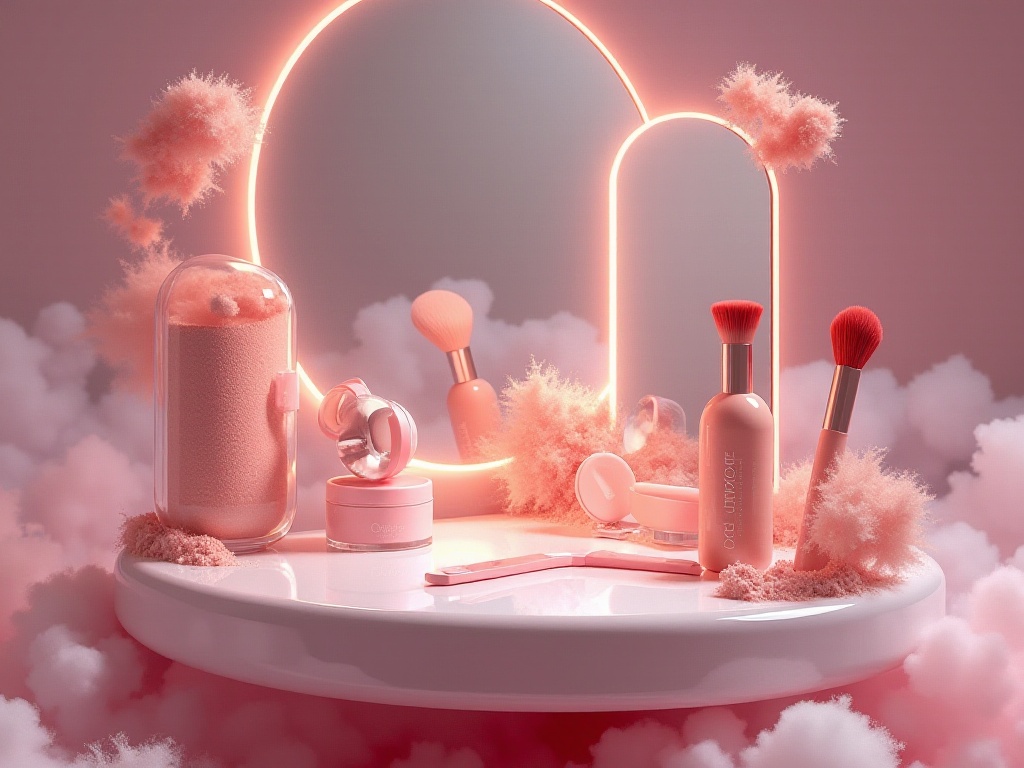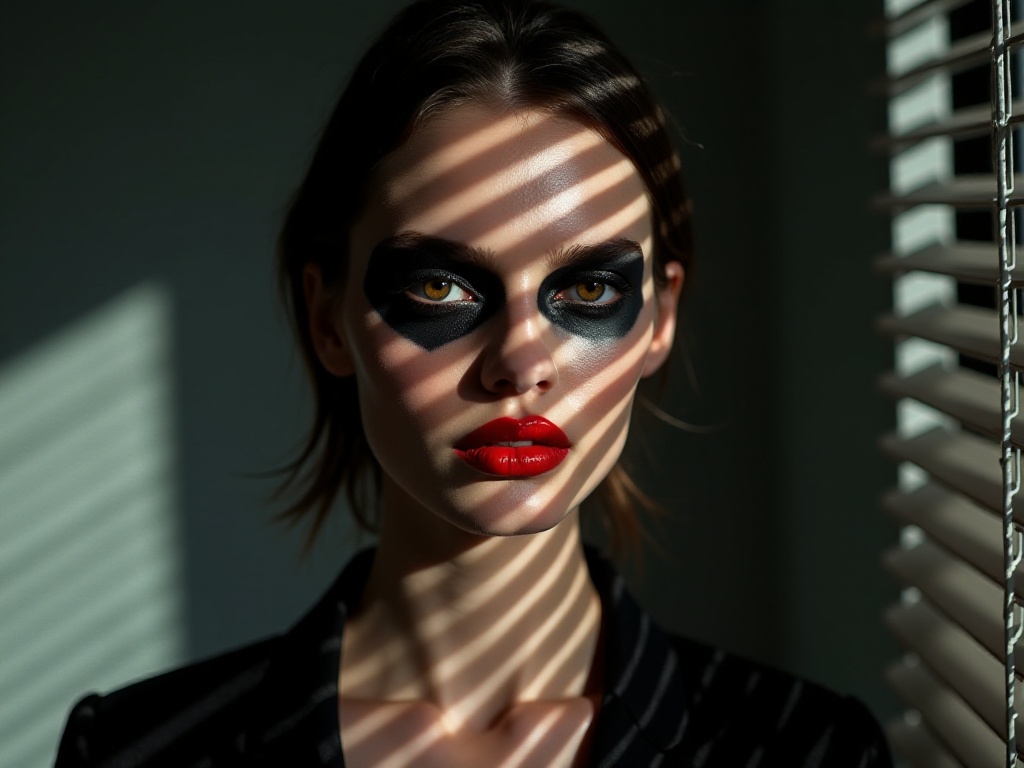Introduction
As someone who just entered the workplace, I truly understand everyone's makeup concerns! Every morning in front of the mirror, I struggle with the same question: what kind of makeup should I wear today? Too light might not look professional enough, while too heavy might make leaders think I'm not steady enough. After exploring and consulting with professionals, I finally found the most suitable makeup method for the workplace, and today I'm sharing my insights with everyone!
Base Makeup Secrets
To be honest, I made many mistakes when I first started applying foundation. Once, trying to cover acne marks, I applied such thick foundation that a colleague said I looked like I was covered in plaster... Later, I consulted with a makeup artist at the counter and learned that the four most important words for workplace foundation are "light and well-adhered."
I now particularly love Maybelline's Fit Me foundation - it's really a champion among affordable products! Its texture is super light, but its coverage doesn't compromise at all. What impressed me most is its durability - my makeup basically stays intact from 9 AM to 6 PM. However, there's one important tip: always use a damp beauty blender to apply. When I used to apply with my hands, it never looked smooth enough, but switching to a damp beauty blender made an immediate difference.
I especially want to remind everyone about choosing foundation texture. When testing at makeup counters, always test the color on your chin. This area's skin tone is closest to our true skin color. Also, make sure to check in natural light - many foundations look perfect under counter lighting but might appear gray or white in natural light.
For application steps, this is my current routine: first apply moisturizer as a base, wait for it to fully absorb, then apply sunscreen, followed by primer. These three steps might seem tedious, but good skincare foundation makes subsequent makeup more adherent and long-lasting. When applying foundation, I squeeze the damp beauty blender until it's semi-dry, then evenly apply foundation to five areas: forehead, nose, both cheeks, and chin. Then gently pat with the beauty blender from inside out to avoid creating annoying small particles.
For concealer, my advice is to use just enough. The biggest taboo in workplace makeup is over-concealing that makes your face look too artificial. If you have acne marks or dark circles, use concealer for local coverage, but pay attention to natural blending. I now habitually pat concealer gently with my fingers for a more natural look.
Finally, the setting step. I personally recommend using setting spray rather than loose powder, as spray won't make your makeup look too dry. When spraying setting spray, maintain about 30 centimeters distance and spray evenly like rain.

Eye Makeup Focus
When it comes to workplace eye makeup, it's really a technical skill! Initially, I always made my eye makeup too heavy, which looked very unprofessional. Later I discovered that workplace eye makeup should emphasize efficiency and alertness.
First, let's talk about eyeshadow selection. I now particularly love earth-tone eyeshadows, especially beige-brown. This color can highlight eye contours without being too heavy. My current eye makeup steps are: first apply a light brown as base, evenly spread across the entire eyelid. Then use a slightly darker brown to blend the outer corner and outer edge of the eye, creating natural dimension. Finally, add a touch of pearly beige eyeshadow to the inner corner, instantly making eyes look brighter and more alert.
About eyeliner, this was my biggest mistake! When I first started working, I liked drawing very thick eyeliner, thinking it looked cool. Then a senior colleague in our department tactfully reminded me it looked a bit too dramatic. Now I choose brown eyeliner and only line two-thirds of the upper eyelid. This makes eyes look more alert without being too heavy.
Mascara selection is also important. The biggest taboo in workplace makeup is clumpy or flaking mascara. I now use waterproof mascara and curl my lashes before applying. When applying mascara, start from the root and gently wiggle side to side, making lashes look naturally curled.
For eyebrow styling, I think it's essential to choose suitable brow shapes based on your face shape. For example, with my round face, straight brows would make my face look rounder, so I choose slightly upward willow-leaf brows to make my face look more three-dimensional. When drawing eyebrows, I first outline the general shape with brow powder, then fill in details with brow pencil, finally setting with brow coat. This ensures eyebrow longevity.
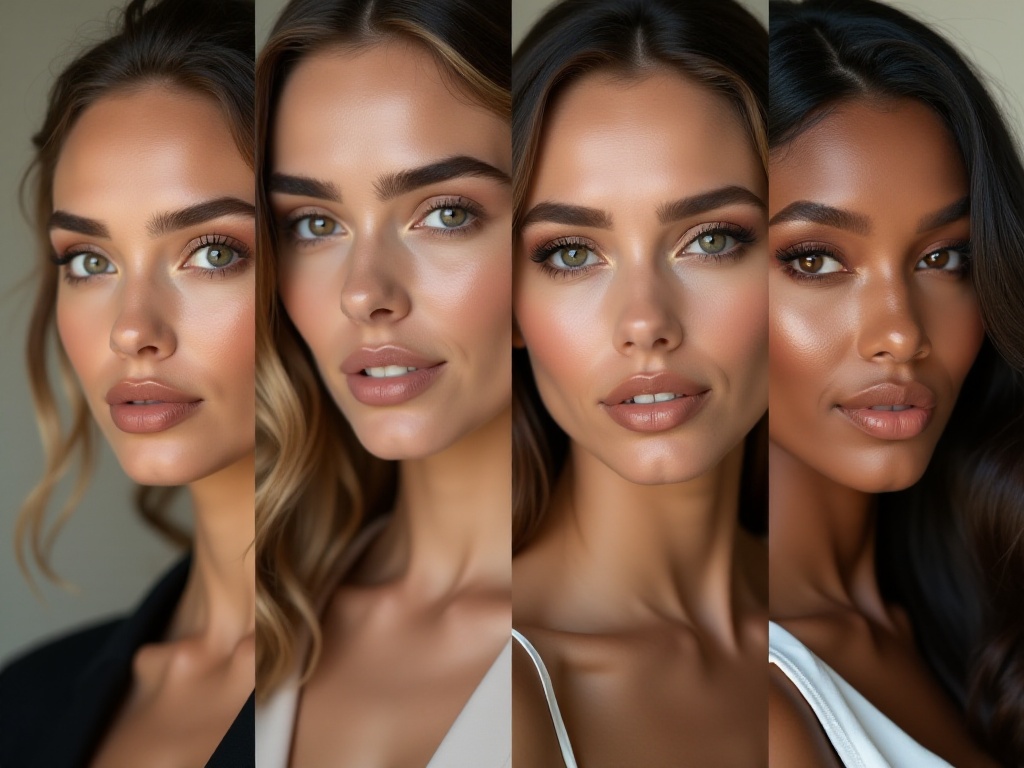
Lip Makeup Techniques
Workplace lip makeup is really an interesting topic. When I first started working, I loved wearing bright red lipstick, thinking it gave a strong career woman vibe. But actually, too bright lip colors can look unprofessional. After exploring, I found that bean paste colors and rose colors are most suitable for the workplace.
I now particularly love velvet matte lipsticks because this texture looks especially high-end and doesn't fade easily. Before applying lipstick, I first apply lip balm as base, wait for it to fully absorb, then outline with lip liner. When drawing lip lines, be careful not to go too far beyond natural lip lines, or it will look very fake. Then fill in with lipstick, finally blot lightly with tissue for longer-lasting lip makeup.
Touch-ups after lunch are also important. I carry a mini lipstick sample for touch-ups after meals. But before touching up, always clean lips with tissue first - directly layering can cause color inconsistency.
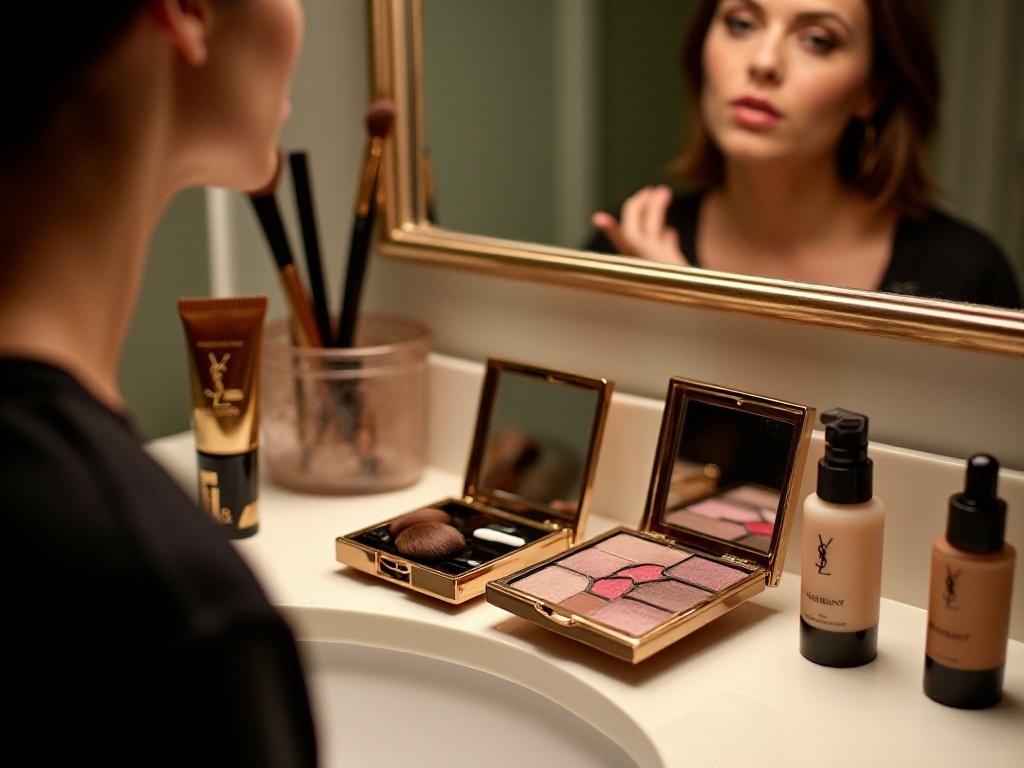
Makeup Steps
Now my morning makeup routine is fixed, which saves a lot of time. First is base makeup, following the steps mentioned earlier: moisturizer-sunscreen-primer-foundation-concealer-setting. Though these steps seem many, they only take about 10 minutes once you're skilled.
Then eye makeup. I first use eye primer for longer-lasting eye makeup. Then follow with eyeshadow, eyeliner, and mascara. When doing eye makeup, ensure good lighting, preferably natural light, for better control of makeup intensity.
Contouring was the last skill I learned. I used to think contouring was hard to master, but later found it's actually simple with the right tools and techniques. I now use a relatively soft angled brush, pick up appropriate amount of contour powder, then lightly sweep along facial contours. Remember to apply evenly, not staying too long in one spot.
Finally, blush and highlighter. Workplace blush should be very light - I like using rose-colored blush for a gentle look. For highlighter, I only apply a little on the nose bridge and C-zone under eyes, making makeup look more three-dimensional without being too dramatic.
Important Notes
Besides makeup steps and techniques, there are some details we often overlook. Like cleaning makeup tools - this is really important! I clean all makeup brushes weekly with special brush cleanser, which not only prevents acne but also helps makeup apply more smoothly.
Also pay attention to product expiration dates. Many people hoard cosmetics, but opened cosmetics have usage time limits. For example, foundation generally should be replaced 6 months after opening, mascara best replaced after 3 months. Using expired cosmetics not only gives poor results but may cause skin problems.
Touch-up tool selection is also important. I prepare a small makeup bag with portable powder compact, concealer, lipstick and cotton pads. This makes lunchtime touch-ups convenient. But note, before touching up, always remove oil with cotton pads - applying makeup directly on oily skin easily causes caking.

Product Recommendations
After using various products, I've summarized some especially suitable for workplace use. For base makeup products, besides Maybelline's Fit Me, I particularly recommend YSL's long-lasting foundation. Though expensive, its coverage and durability are excellent, and it doesn't oxidize easily. If budget is limited, try getting a sample first.
For eyeshadow palettes, I currently use Rare Beauty's 12-color palette most often. All colors are very workplace-appropriate, and the powder is very fine without fallout. I think this palette's biggest advantage is it works for daily makeup, and can transform into date makeup by deepening colors after work.
For contouring, I recommend MAKE Beauty's matte contour powder. Its color is very natural, without muddy feeling, and can be layered. It's also hard for beginners to apply too heavily.
For blush, I think NARS Orgasm is really a workplace essential. Its pearl finish is delicate, color natural, and one blush lasts very long. Though somewhat expensive, it's definitely worth investing in.
For lipsticks, I recently love MAC's velvet matte series. The texture is very light but with good color payoff and doesn't fade easily. For a gentler effect, try YSL's popular nude shades - applying thinly works well for workplace.
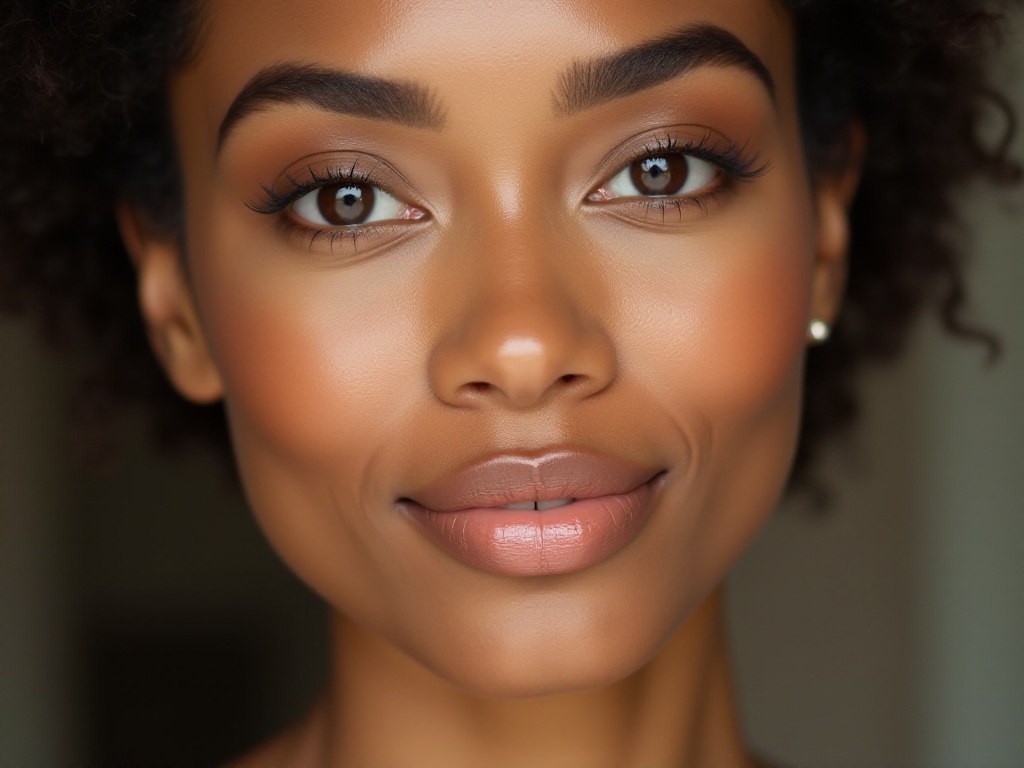
Final Thoughts
Through this period of exploration and practice, I've found that workplace makeup isn't about how many products you use or how skilled your techniques are, but finding what works best for you. Everyone has different skin types and face shapes, so don't blindly follow certain makeup looks. Try more, summarize more, to find your most suitable workplace makeup.
Also, workplace makeup isn't unchangeable. As seasons change, we need to adjust our base makeup products and makeup focus accordingly. For example, choose lighter base makeup products in summer, more moisturizing textures in winter.
Finally, I want to say that workplace makeup's ultimate purpose is to make us look more energetic and professional. So when applying makeup, always remind yourself not to pursue heavy makeup effects. Light makeup can also be exquisite - the key is paying attention to every detail.
Everyone goes through the newcomer phase in workplace and encounters various problems. But as long as we keep learning and summarizing, we can definitely find the most suitable workplace makeup for ourselves. Hope my experiences can help those of you also striving in the workplace!






